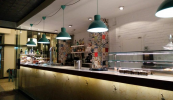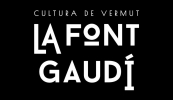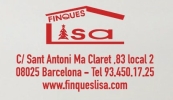Points of interest
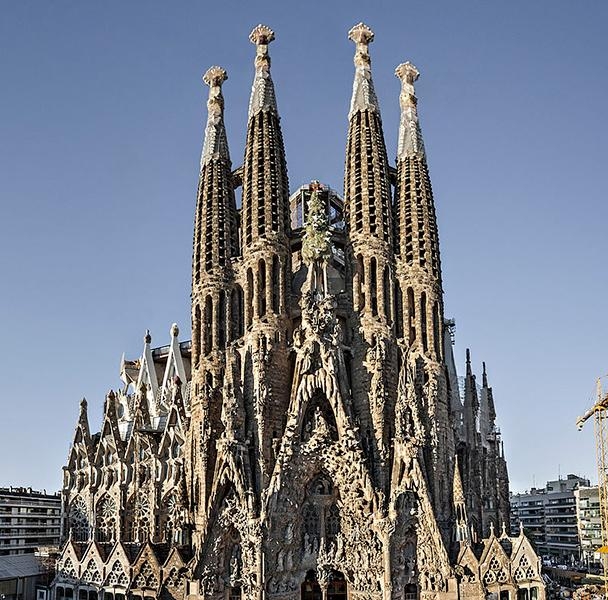
La Sagrada Familia: "The Cathedral of the Poor"
The Basilica of the Sagrada Familia is the most emblematic monument of Barcelona. As a prime example of the modernist architecture designed by Gaudí, thousands of tourists flock each day to contemplate the magnificent though unfinished temple.
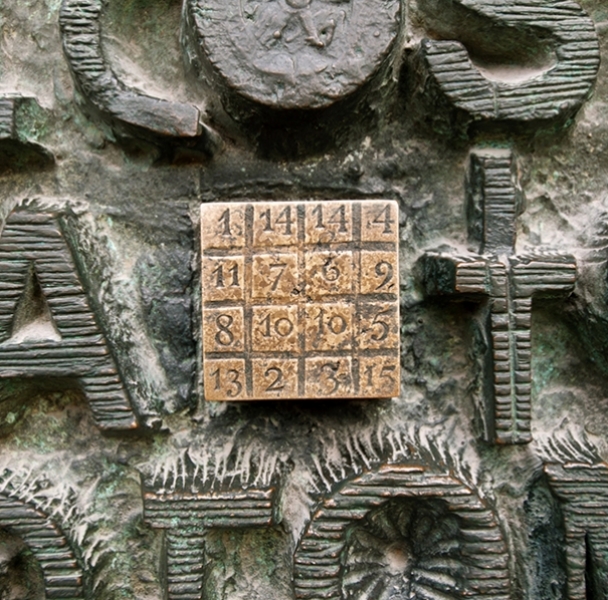
The Magic Square in Sagrada Família
Although in six years the works of the Sagrada Família will finish officially, the original Gaudí’s plan devised for this façade will remain forever in secret. One of those details that often are unnoticed by visitors is the magic square on the Passion Façade
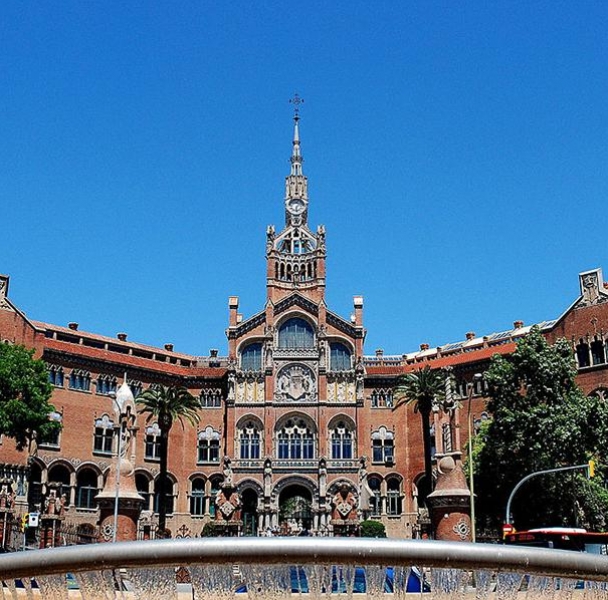
Recinte Modernista de Sant Pau
Declared World Heritage by UNESCO in 1997, this monumental complex, designed by Lluís Domènech i Montaner, is the largest venue and unique example of Catalan modernist architecture.
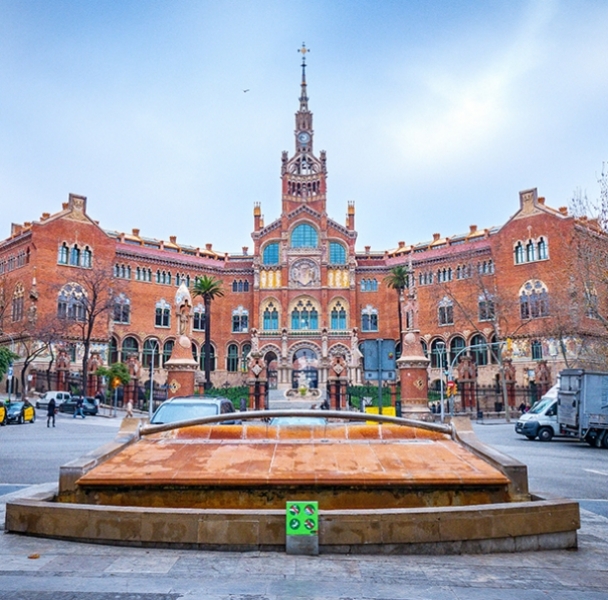
Sant Pau and Indiana Jones
At the end of the XIX century, the architect Lluís Domènech i Montaner built the current Modernist facility: a space structured in several pavilions - each one attending to a medical specialty -, surrounded by gardens and connected to each other by a network of underground tunnels. The hospital, declared World Heritage of UNESCO in 1997, appeared on the television show The Young Indiana Jones Chronicles, by George Lucas (1992-1996) representing ... the residence of a wealthy bourgeois!
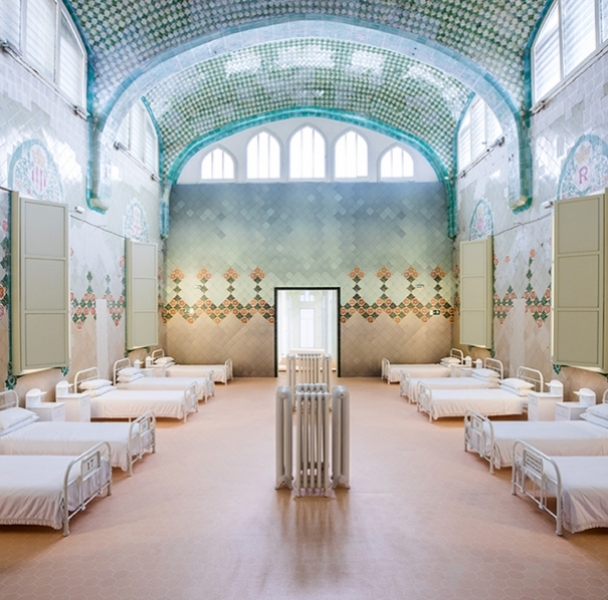
Pavelló de Sant Rafael Recinte Modernista de Sant Pau
Sant Pau became the units for haematology, traumatology and, orthopaedic pathologies during the Spanish Civil War. But also, there was still another mission at San Rafael pavilion: the scenario for a cinema movie. Agusti Villaronga's film Incerta Glòria showed the hospital during the thirties with the help of Lieutenant Lluís de Brocà, when he entered to collect the medication for his sick son. The furniture and other decoration elements have been preserved for the public visit.
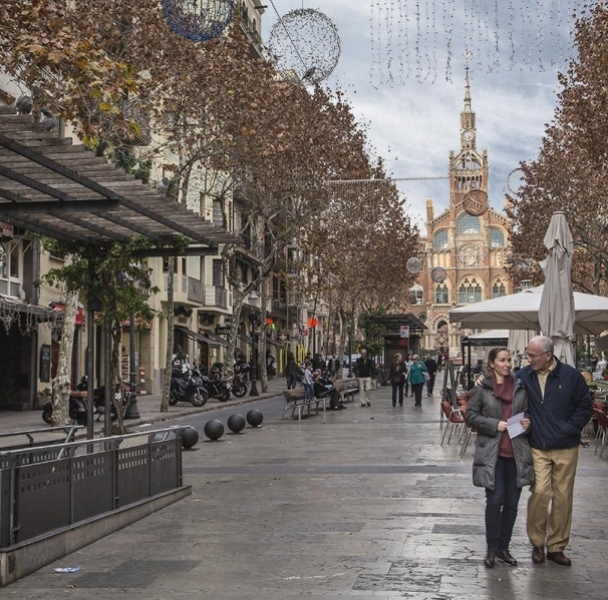
Gaudí Avenue, "The Modernist Avenue of Barcelona"
This avenue is a small diagonal that breaks the perfect grid layout of the Eixample and stretches proudly from the Sagrada Família towards the Hospital de Sant Pau, the main modernist monuments of the city.
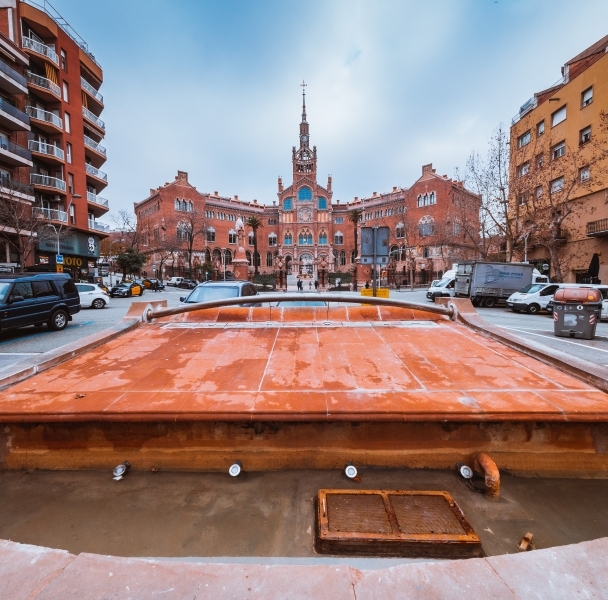
Font of Gaudí Street
Màrius Quintana projected a fountain of sandstone and stainless steel, with abstract forms, and was inaugurated on September 21, 1985.
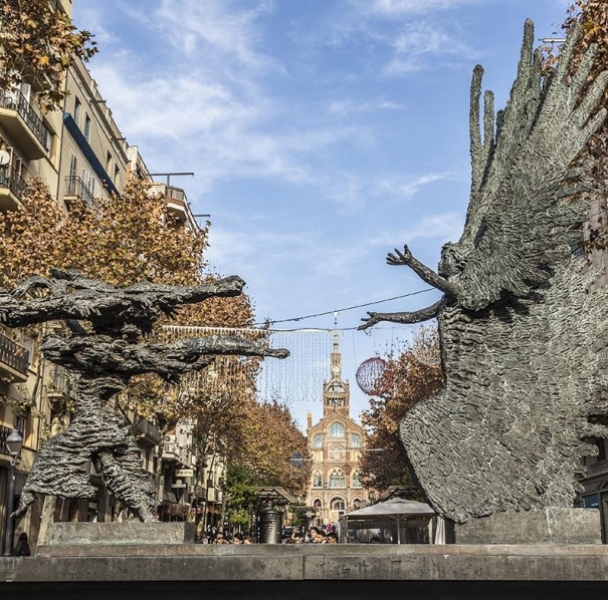
The Good Weather Chasing the Storm
The sculpture is a work by Apel-les Fenosa, in 1978. This statue is built in bronze on patina and based on an iron and basalt pedestal.
At Gaudí Shopping we have plans for the whole family!
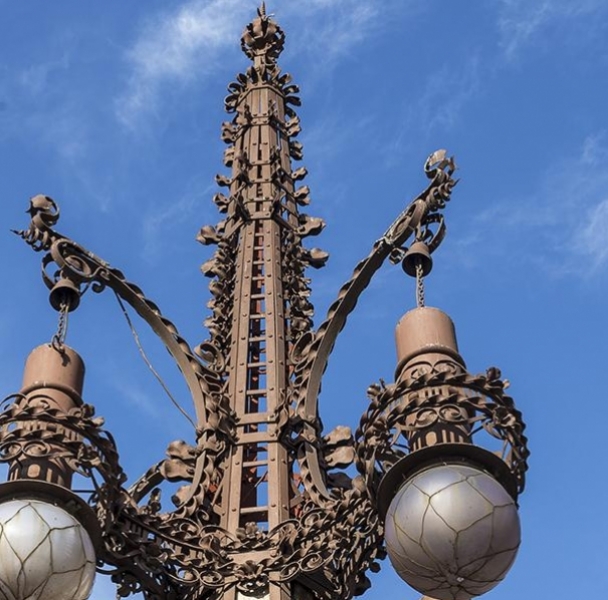
Streetlights by Pere Falqués
A series of modernist streetlamps that lend it an elegant touch and unique style are showcased on the avenue. They were designed by Pere Falqués in 1909. They originally stood at the crossroads between the Passeig de Gràcia and the Avinguda de Diagonal but were removed from this site in 1957 because they were a hindrance to traffic. They were placed along the Avinguda de Gaudí in 1985, after being stored for many years in a local warehouse.
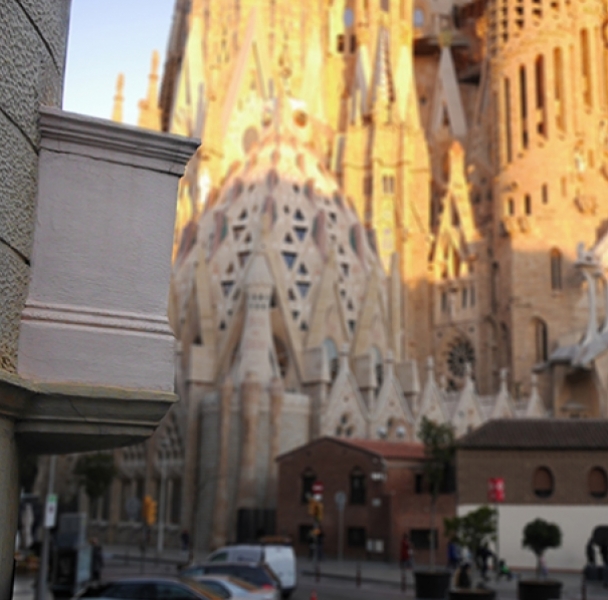
Nomenclature Avinguda de Gaudí Neighbourhood
Sardenya, Rosselló, Mallorca, Provença or Còrsega. Lepant, Padilla, Castillejos or Dos de Maig. All are names of streets in Avinguda de Gaudí district. Many of them come from past times and others have been ratified by an expert commission of the Nomenclàtor de Barcelona.
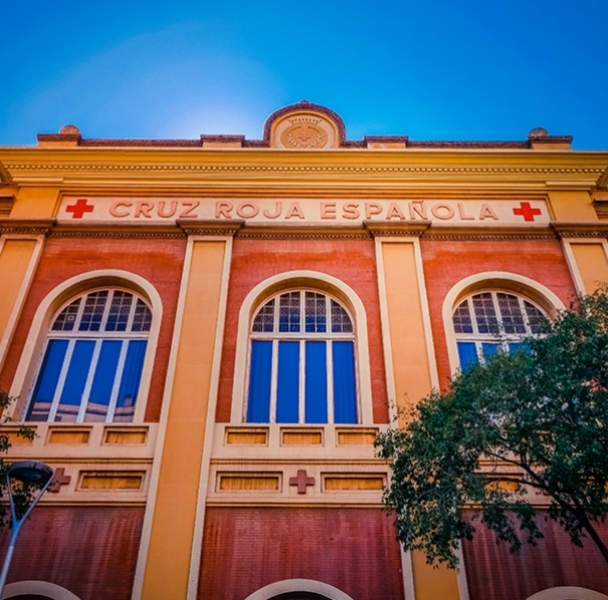
The Hospital Dos de Maig
In 1924 Queen Victoria Eugenia - member of the Red Cross Girls - inaugurated the building with a very specific goal: attending to all those men who returned injured from the Rif War, in Morocco. Years later, the country suffered the effects of the war conflict with the outbreak of the Spanish Civil War, and the Hospital de la Creu Roja would become key in assisting the wounded men. After the postwar period, the institution became a medical reference in Catalunya.
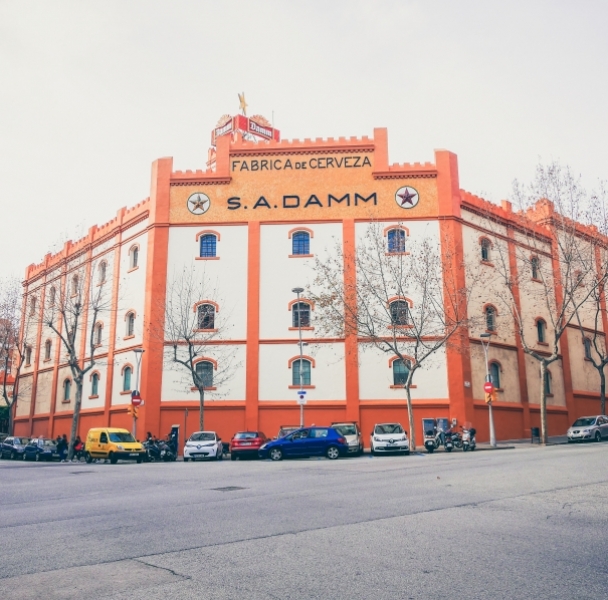
Damm
As suggests the name of the long street that traverses the neighbourhood, the industry was “the distinguishing mark” during the first half of the twentieth century.
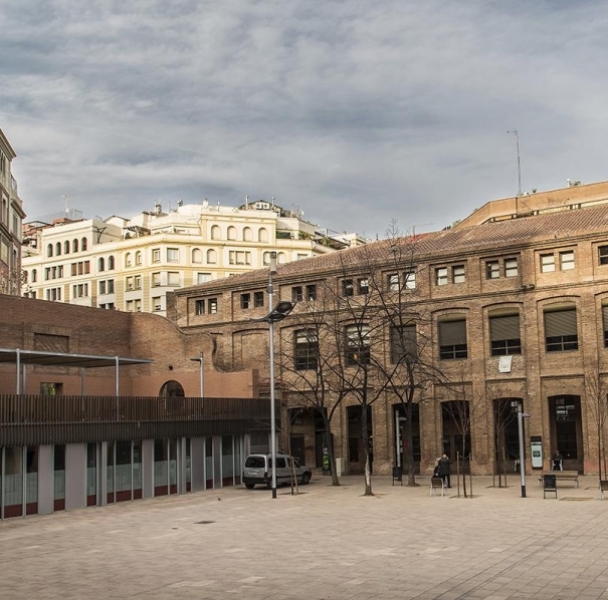
La Sedeta
Nowadays you can find pencils, markers and desks, but in a past time there was wool, silk, and looms. The current Community Center La Sedeta was, from 1900 until 1975, one of the most important textile factories in Barcelona. In the late nineteenth and early twentieth centuries, La Sedeta was one of the most valued industrial sectors in Catalonia.
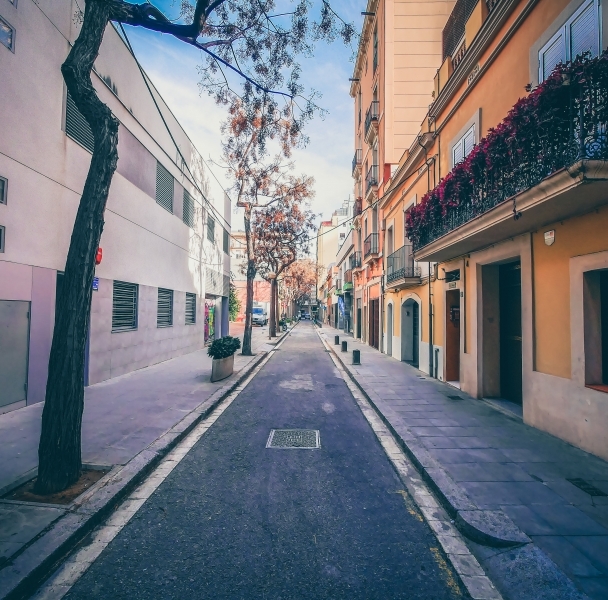
Passatge Simó
This passageway owes its name to Mrs. Francesca Simon i Ferrer, who was the owner of the plot in 1867.
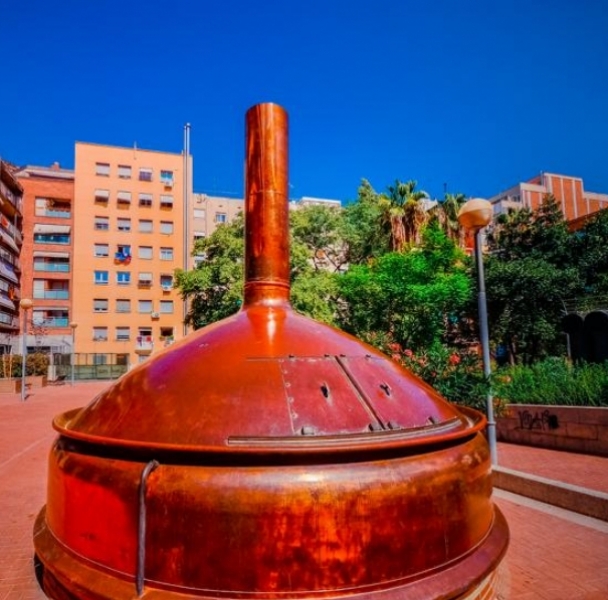
Montserrat Roig
The gardens dedicated to the writer Montserrat Roig are located inside the block where the packaging system of the old Damm brewery was located.
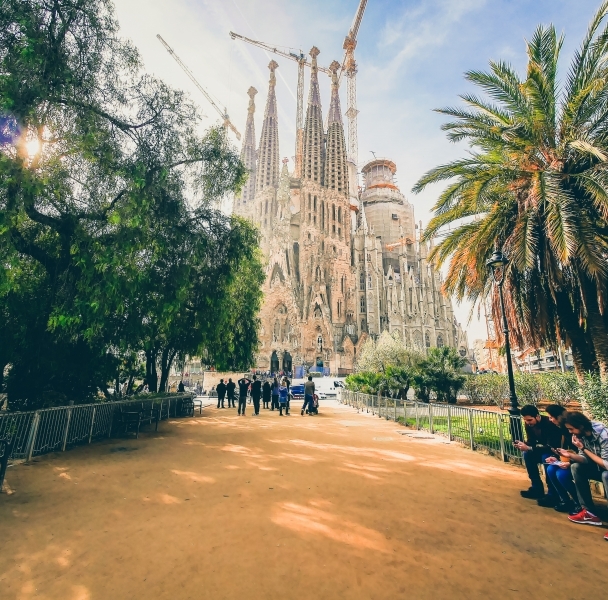
Sagrada Familia Square
At the beginning of the 20th century, there is evidence that the land where the square is situated was used as a soccer field.
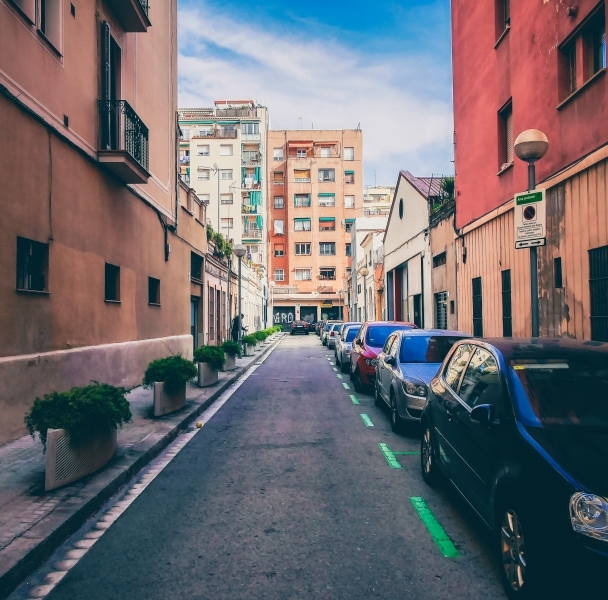
Pasaje Carsi
Discovering the hidden ways. he Passatge de Carsi dedicated to Ricard Carsi i Lacasa, an engineer and well builder.
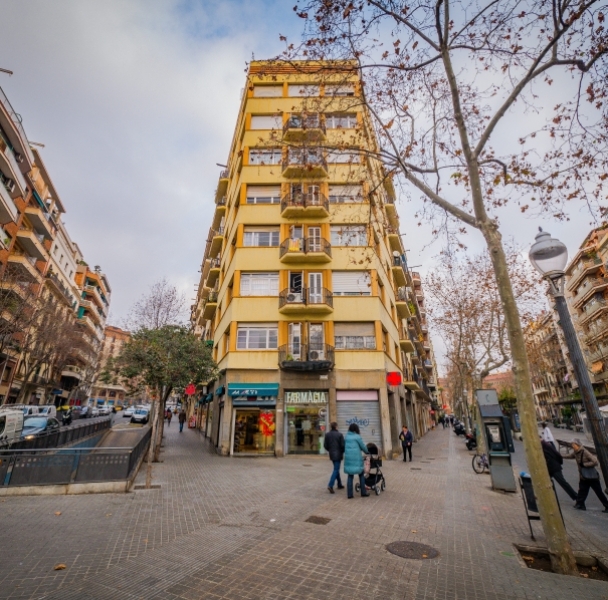
Casa de José Viladot
In the neighborhood we can find different houses. This pentagonal corner building is the work of the architect Jaume Mestres.
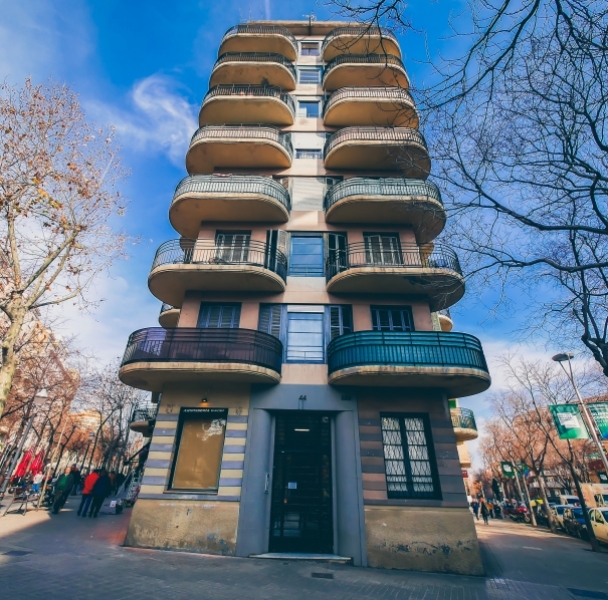
Casa de Joan Ginestà
It is located in a trapezoidal corner plot, with the main façade in the chamfered corner. The edifice was built during the years 1931-32.
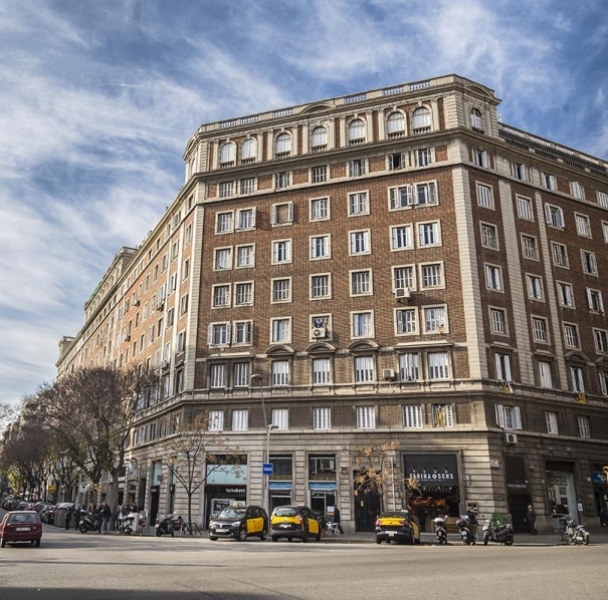
Edificio Clip
The name CLIP is result of the first initials of the streets where it is located, Còrsega, Lepant, Industry, and Padilla.
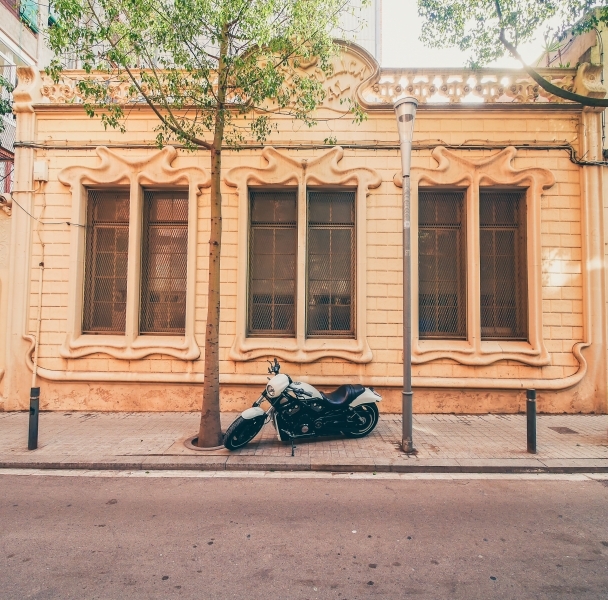
Casa del Passatge Centelles
In the neighborhood we can find different houses and buildings that still have sgraffito of the time in the facade or present some architectural and historical element that make them peculiar
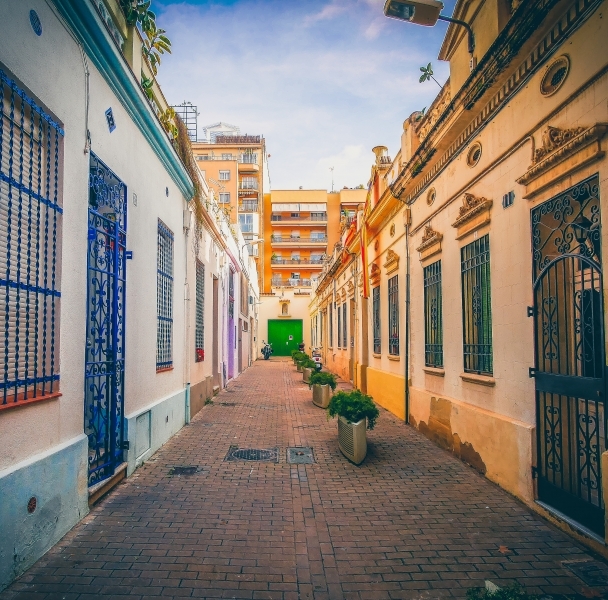
Passatge de Roger de Flor
This is one of the most interesting passageways in Eixample district
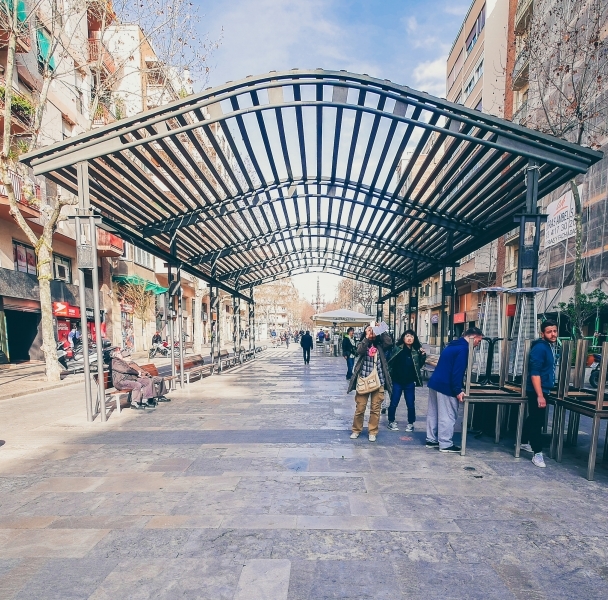
The Roof
The first section of Gaudi Avenue is partially covered by a roof made of iron and iroko beams, a large hardwood tree from Cameroon and Angola, in the shape of a vault. Underneath this element, there are concrete benches without backrest.
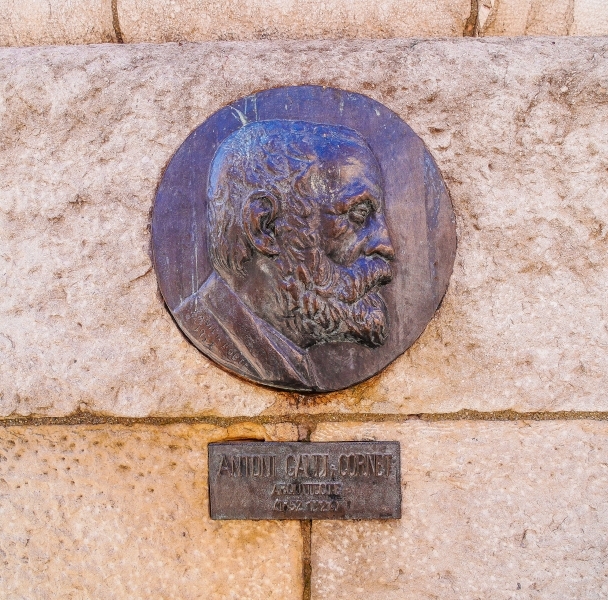
The Medallion
In the last streetlamp of the avenue, heading to Sagrada Família, you can find a bronze medallion with Gaudí’s face.
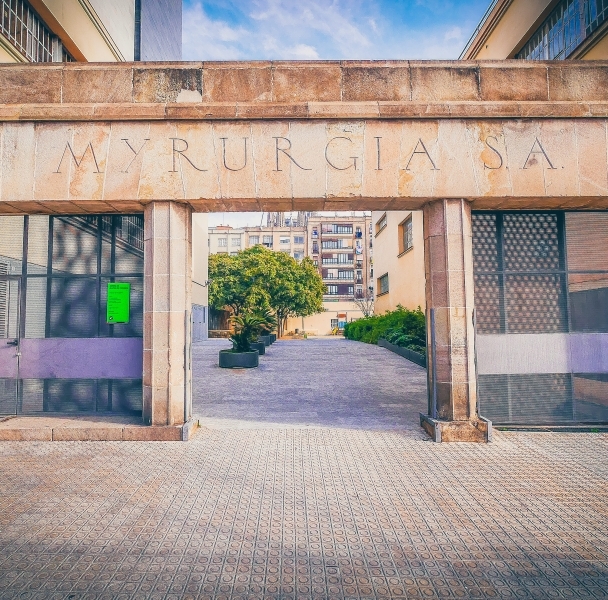
Gardens of Beatriu de Provença
Part of the Myrurgia old perfume factory. The Myrurgia old perfume factory took up the streets of Provença, Nàpols and Mallorca. Currently, part of this factory has become the Beatriu de Provence gardens, a block interior courtyard with access to Nàpols street.
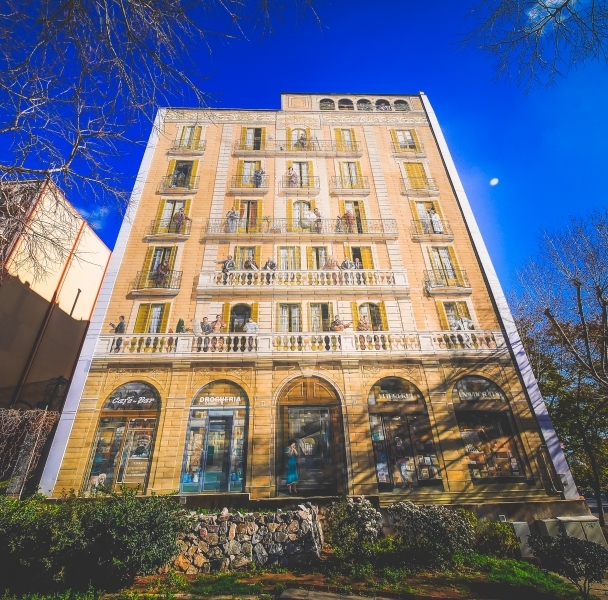
The Balconies of Barcelona
Mural that simulates to be a façade of building with balconades where take out the diverse head characters.
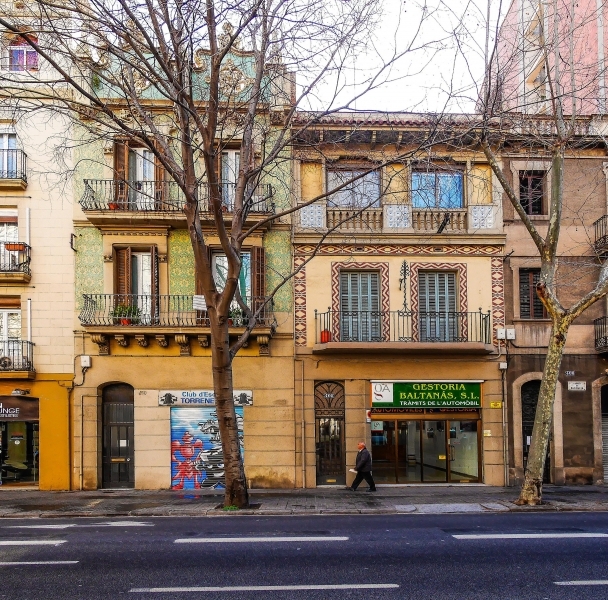
Mateu Garcia Building
It is a modernist building, by Domènec Boada Piera, is a three-storey house between dividing walls.
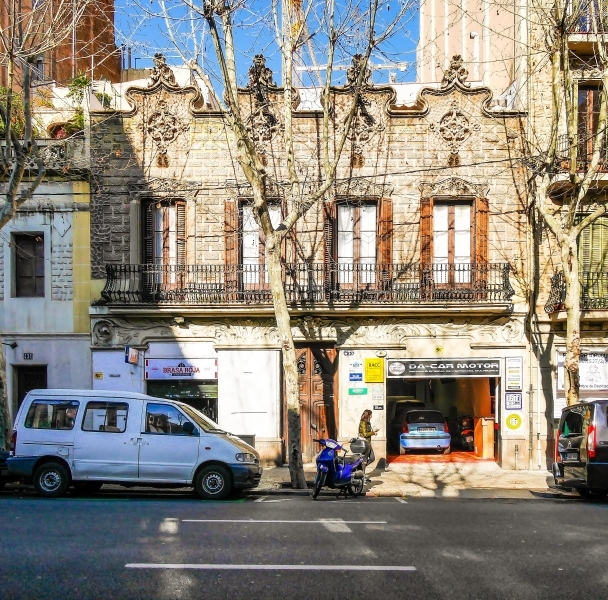
Josep Carreras Building
This modernist building, by Josep Graner Prat. This modernist building is a two-storey house between dividing walls, with four apertures leading to a balcony.
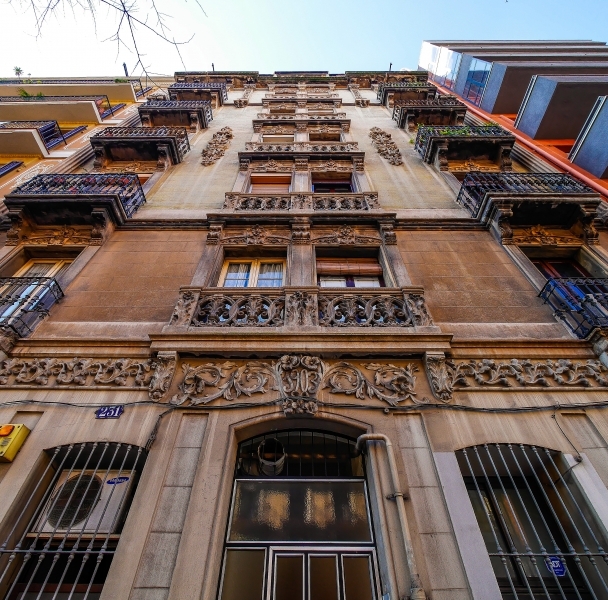
Joan Vila Building
It is a work by Josep Pérez Terraza, in an eclectic style. The current appearance of the building is the result of an extension in the years 1902-1903.
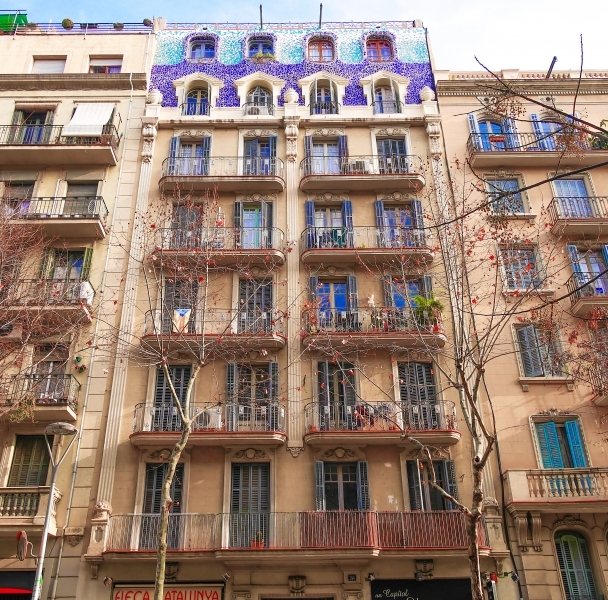
Pascual Amorós Building
In 1930, Josep Masdeu carried out the extension of this modernist building, originally of academic style, with a sort of attic covered with ceramic "trencadís".
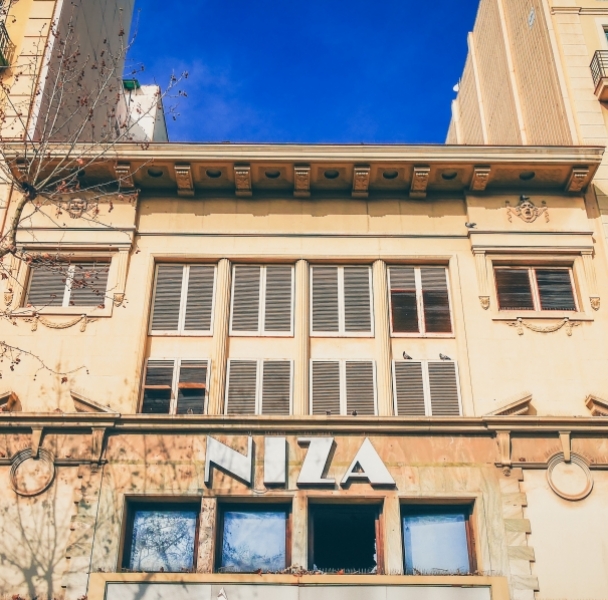
Old Niza Cinema
The old “Cinema Niza” was one of the leisure reference points in Barcelona, located in Sagrada Familia Square, and it opened in 1946.Its spaciousness made the Cinema Niza one of the greatest premiere cinemas in Barcelona. The neighbours were not able to stop the demolition of the historic Cinema Niza, one of the most popular leisure attractions in the city, nowadays, the cinema is closed and the space remains shut down.
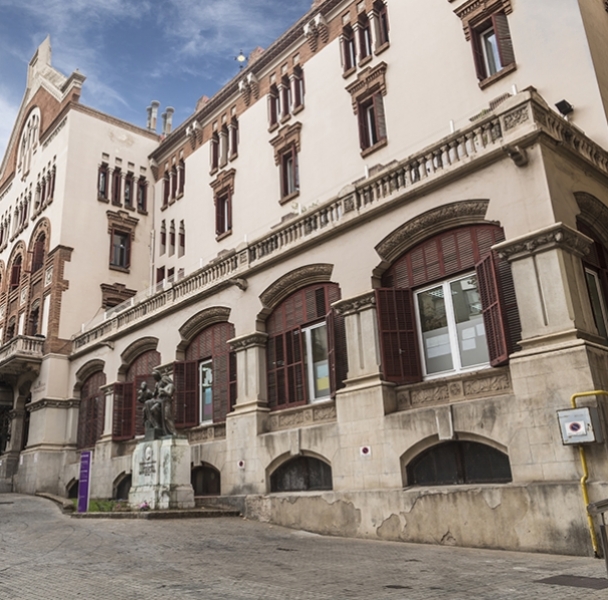
The hospital for waiters
Could a building break down class barriers? Yes, L’Aliança did it. Josep Domènech i Masana inaugurated in 1917 the new centre Mutualitat de Previsió Social de la Germandat de Cambrers, known popularly as L’Aliança, a medical care centre that for decades cared for waiters and workers to merchants and bourgeoisies
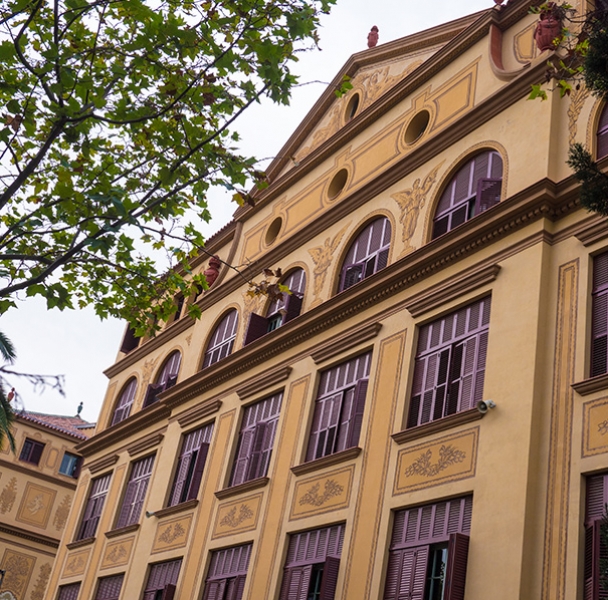
A convent full of dogs. Escola Ramon Llull
The current Escola Ramon Llull has welcomed from nuns to dogs and children. The architect Josep Godoy inaugurated the Noucentista building in 1931. In spite of the passage of the years, neighbours still talk about that convent full of dogs, “Convent dels Gossos”. A denomination that comes from the time in which a pack of gods took over the building, during the transition between the farewell of the nuns and the welcome of the new school.
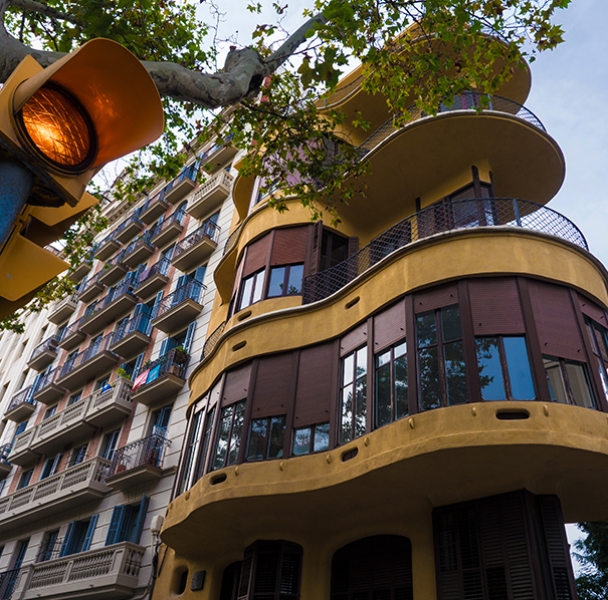
The Casa Planells, the end of an era
Halfway between modernism and architectural rationalism, the 332 in Avinguda Diagonal accommodates what is considered the last work of the Gaudi trend in Barcelona: Casa Planells. Only the ingenuity of Josep Maria Jujol was able to solve the challenge presented by the contractor Evel·lí Planells in 1923, from a plot that barely reached the 80m2, he planned majestic apartments of up to 120m2
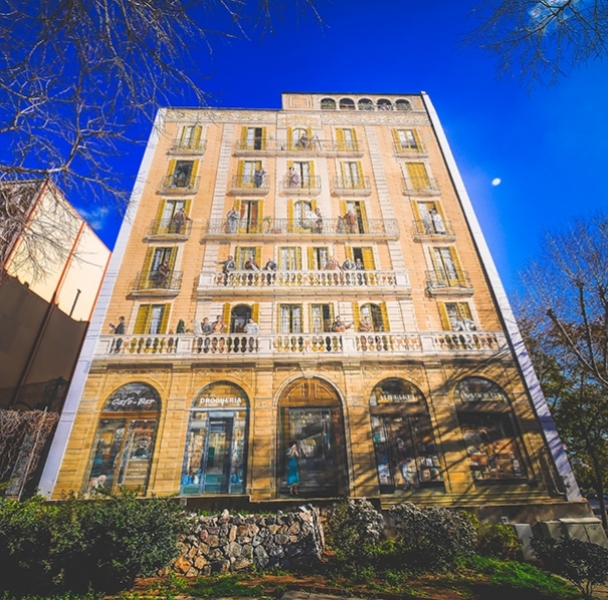
The balconies of Barcelona. Celebrities getting some fresh air
“Els balcons de Barcelona”, a mural that simulates the façade of a building with several balconies and a famous neighbourhood; a group of twenty cultural celebrities and personalities. From Christopher Columbus or the writer Mercè Rodoreda, to the painter Pablo Picasso or the actress Margarida Xirgu. The Barcelona City Council commissioned this work to the French company Cité Création in 1989, with the purpose of disguising a block wall building.
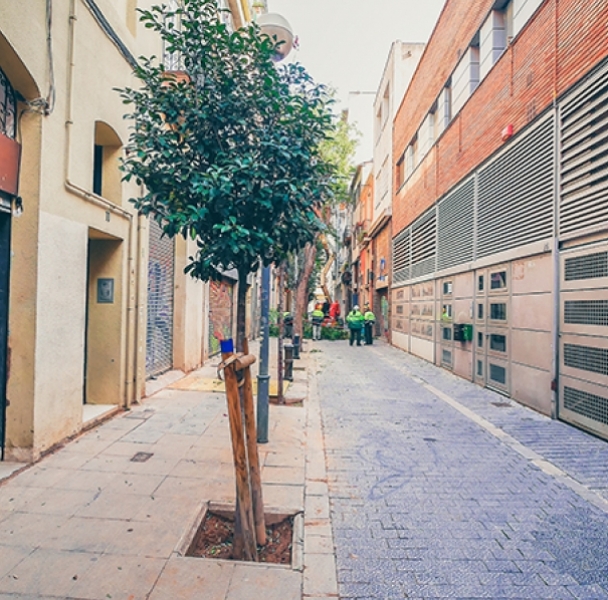
Passatge de Gaiolà. An explosive past
Between Carrer de Nàpols and Carrer de Sicília, it hides the first alley opened in the El Poblet ancient quarter in 1871. Passatge del Gaiolà also stands out for another singularity. The location was one of the first places in the city to be bombarded by German aviation – allies of Franco troops during the Spanish Civil War.
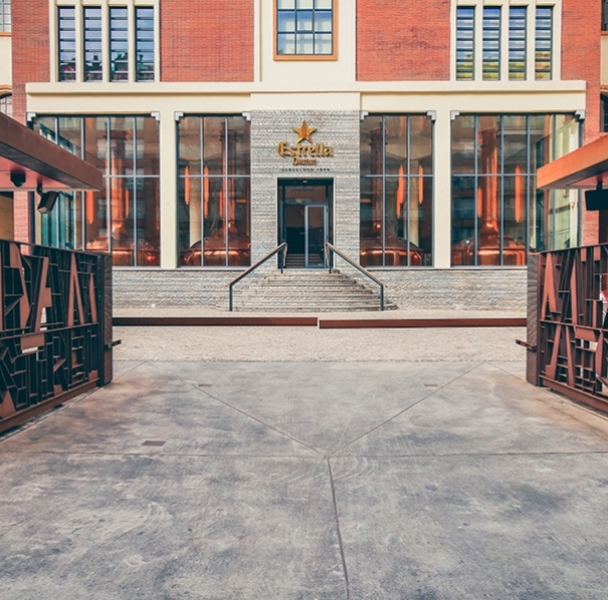
A Mediterranean drink?
Fleeing from the Franco-Prussian war in Alsace, the Damm family arrived in Barcelona with the aim of introducing into the Catalan market the favourite drink in their country: beer. After a few years treading with other producers, in 1905 Damm installed their factory in Carrer de Rosselló. As we know, the 'Mediterranean beer' triumphed in the country and the production indexes took an upturn
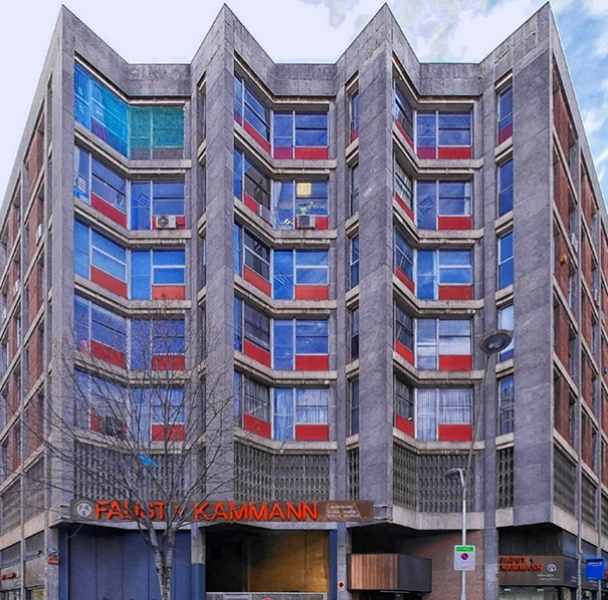
Editorial Herder
In the middle of the Second World War, the Herder family chose Barcelona to flee from the Nazi hell. Owners of an international publishing house, they landed in Barcelona in 1948, where they built a new headquarters in order to print books safely.
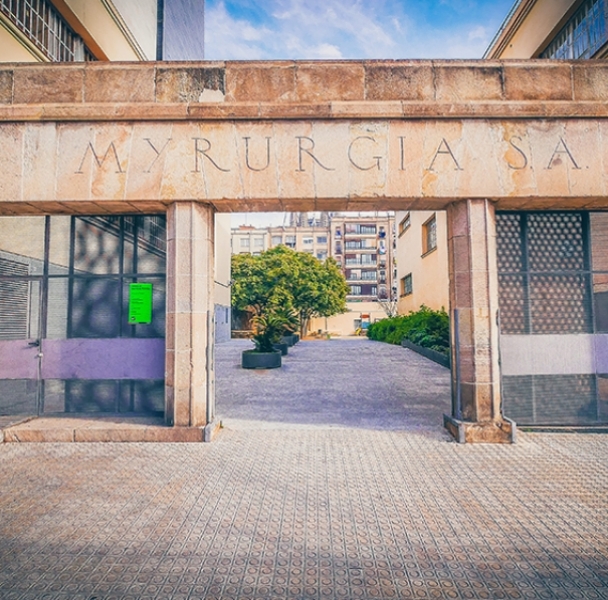
An emblematic factory: Myrurgia
Some of the factories that were located in the Sagrada Família neighbourhood were emblematic. This is the case of Myrurgia, a major perfume company.
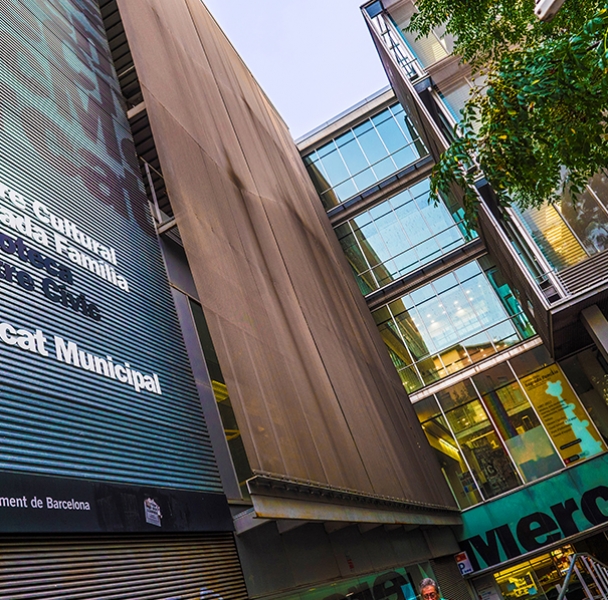
General Motors Peninsular (Mercat de la Sagrada Família)
Six years after founding the Spanish subsidiary, General Motors Peninsular landed in Barcelona in 1933. Today, the space occupied by the factory is a market, a library and a community centre.
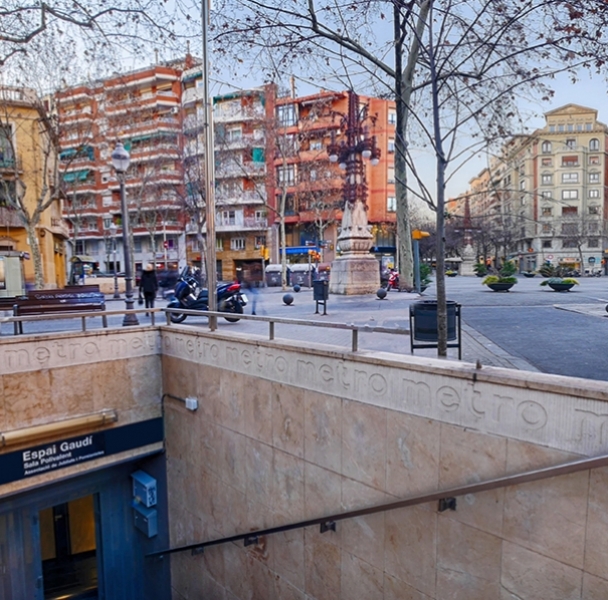
The ghost station
Of the almost dozens of ghost stations in Barcelona, this is the only one that has never been operational. However, the facilities built in the sixties are kept in good condition and can now be visited.
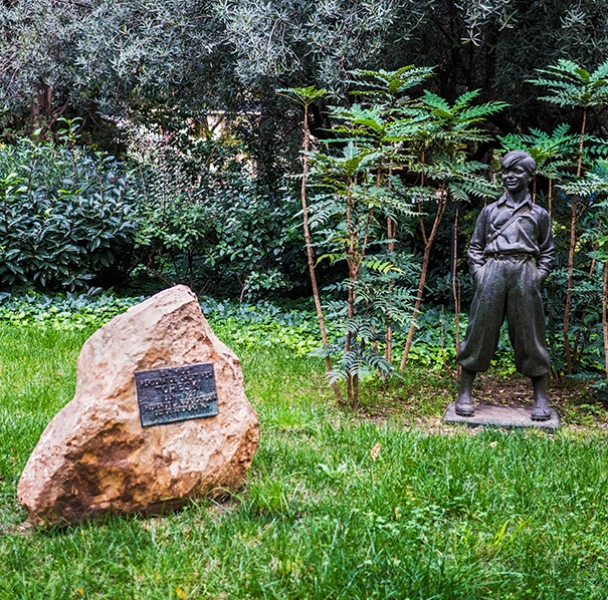
Are you lost, kid?
Among the trees and gardens of Plaça de la Sagrada Família, you can see a unique sculpted character made with bronze, Míliu. The sculpture is dedicated to the child's character created by the speaker of Ràdio Barcelona Toreski, which his real name was Josep Torres. Few people know the real story behind this statue when visiting the gardens of Plaça de la Sagrada Família.
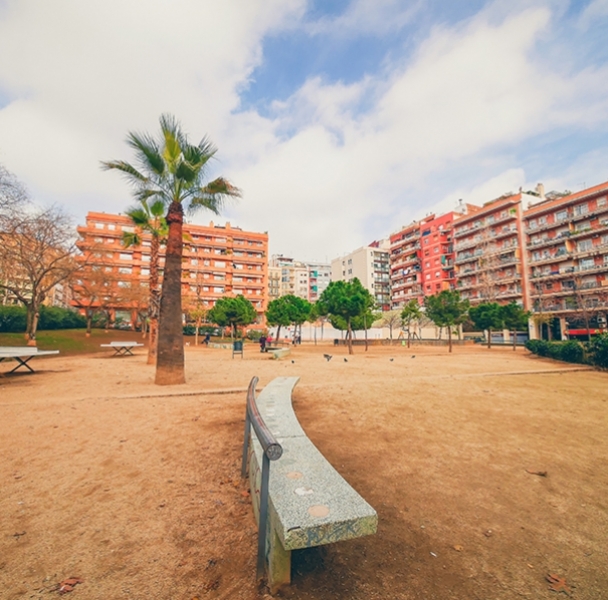
Barça fields, next to l’Avinguda Gaudí
The process of building the future Johann Cruyff Stadium makes us look back and remember that, before enjoying the matches at the current field in Les Corts, culers had other “temples”. One of them was L’Escopidora, the field located in Carrer d’ Indústria, which was the pride for many spectators. . In Carrer d’ Indústria, they played stars such as Zamora, Alcántara, Samitier or Plattkó, who had to shower in the open air with a basin and a cup of cold water



